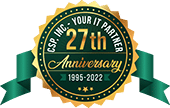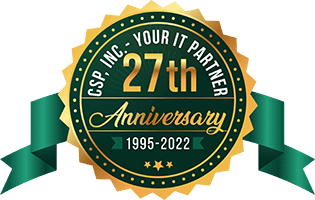1310 Nowell Road
Raleigh, NC 27607
1310 Nowell Road
Raleigh, NC 27607
Existing CSP Client: (919) 424-2060
SALES: (919) 420-3231

NIST has recently released a quick start guide that outlines the procedures used to place test data on a mobile device by forensics experts during an investigation. In many criminal cases, the authorities can gain valuable information by examining smartphones, computers, and tablets belonging to those involved. The NIST guide provides important directions, guidance, and techniques for setting up a device for use with mobile forensic tools.

Criminal Investigations and Legal Trials
Recovering data from digital devices has become an important part of many criminal investigations. The information found on a phone can prove helpful in providing clues as to the whereabouts and activities of suspects. This data is often used during trials and should be as accurate as possible since a legal verdict could be determined based upon what is found on the suspect’s computer, cell phone and/or tablet.
Even the best forensic investigators admit that data extraction from mobile devices can be tedious. This is due to the many differences in the types of data and formats used from one device to the next. Testing can be performed by anyone in the law enforcement community, but the official Federated Testing software must be utilized.
Tools for Law Enforcement
For years, law enforcement and forensic experts have used the data found on mobile phones and computers during the course of their investigations. As this science has moved forward and evolved, it has become necessary to create guidelines for populating mobile test devices. This eliminates much of the guesswork and helps a forensics team to be consistent with their testing procedures. This, in turn, helps to guarantee more reliable results. Consistency and reliability are key aspects of the type of data that can be used during a legal trial.
The two basic strategies for populating a mobile phone, computer or tablet with testing tools are:
Mobile forensic tools are primarily used with Federated Testing, but can be used with other test methods. By undergoing these forensics tool tests, investigators can ensure greater accuracy and easy sharing of their results with others in the forensics community.
Contents of the NIST Guide
The NIST Guide begins by describing the primary types of data found on a mobile device or computer, including, but not limited to:
A mobile device may contain hundreds of data elements that could be helpful to investigators. In many cases, it’s best to narrow down the search to data that seems to be most relevant to the specific case. This can prevent investigators from wasting valuable time on unimportant information. As the case progresses, investigators may determine that other data could also be helpful to uncover. Testing can be performed as necessary on those.
Divided Sections
The NIST document is separated into sections and appendices that describe the various methods of populating and documenting data found on a mobile device including the SIM/UICC. These are outlined below:
How to Begin
The guide provides step-by-step instructions for populating and documenting a device. The guide recommends performing these steps for each mobile device tested.
Begin by choosing the most relevant data types that seem pertinent to your inquiry or investigation. If this data does not result in the information hoped for, testers can always go back and perform these steps on other types of data found on the form.
Appendix A-Acronyms
Appendix A explains all acronyms used in these testing procedures. It is necessary to assign an acronym to each item to reduce the amount of writing or typing. These can be confusing since some are so similar. Therefore, it is recommended that testers keep Appendix A handy to make sure they’re using the right terms when filling out their paperwork.
Appendix B-Mobile Device Documentation
Next, fill out the template found in Appendix B for each device to be tested. This template will ask common questions about the type of equipment including the name of the subscriber, device make, and model, IMEI for the phone and other identifying info. The IMEI can be found by going to Settings, then choosing About and scrolling down to where the IMEI is shown. Enter the number with no spaces or dashes on the form found in Appendix B. In this area, there are many other identifying numbers required on the form.
Appendix C-Mobile Device Data Example
This example form has been filled out for one “Stevie Ray Vaughn”. Though it is somewhat humorous, it shows the types of data to be placed in each portion of the form. His full name, address, email address and birth date are shown. If a photo of the phone’s owner is available, that should also be included. Calendar data can be important because it shows the daily routine, meetings, and people that a suspect might be associated with. It can help investigators create a timeline for the last few days of a person’s life.
Appendix C is quite lengthy due to the fact that SMS and EMS messages are recorded here along with call logs. Many people exchange dozens of text messages with friends each day. Include information about who sent the message and its contents. Make separate entries for unread messages and voicemails. Deleted messages and calls should also be recorded.
Federated Testing Project
The Federated Testing project at NIST is an extension of the Computer Forensics Tool Testing (CFTT) Program. This program has been successful in helping laboratories and forensic experts accurately uncover important information from mobile devices and computers. It enables consistent reporting and sharing of results across various labs and law enforcement agencies found across the United States.

Always at your service to provide the highest level of quality support to our customers.

Anthony Firth Client Engineer

“I’m passionate about building and fostering relationships, and finding solutions for success.”

Michael Koenig Client Account Manager

“I help clients stabilize and grow their IT infrastructure so they can focus on growing their core business.”

Josh Wilshire Systems Engineer Team Lead

“I strive to provide the highest level of quality service to our customers.”

Tommy Williams Sr. Hardware Engineer

“I’m driven by the steadfast belief that technology must serve as a business enabler. This mantra has driven 21
Years of successful partnerships.”

Stephen Riddick VP Sales & Marketing

“CSP doesn’t succeed unless your company succeeds.”

Stephen Allen Inventory Manager

“Through my intuition and genuine concern to help others I have built long-lasting relationships with our customers, co-workers and business partners.”

Scott Forbes VP Support Services

“Every day, I work with clients to help plan the future of their businesses.”

Michael Bowman vCIO

“Your IT problems become our IT solutions.”

Mark McLemore Project Engineer

“Managing internal and external operations to ensure that CSP provides quality and reliable customer service .”

Margie Figueroa Business Manager

“Providing quality internal and externals financial support to our customers and accounting support to CSP.”

Katie Steiglitz Accounting Administrator

“Some call me the CEO. I call myself the Cheerleader for an awesome team!”

William B. Riddick Founder & CEO

“CSP is here to assist you with your IT needs.”

Beth Wylie Inside Sales Manager




On What Questions You Need To Ask Before Signing Any Agreement.
"*" indicates required fields

Raleigh IT Support Company and IT Services Provider | CSP Inc.
1310 Nowell Rd,
Raleigh, NC 27607
Existing CSP Client: (919) 424-2060
SALES: (919) 420-3231
Receive email updates and informative marketing materials by subscribing to our newsletter.
"*" indicates required fields